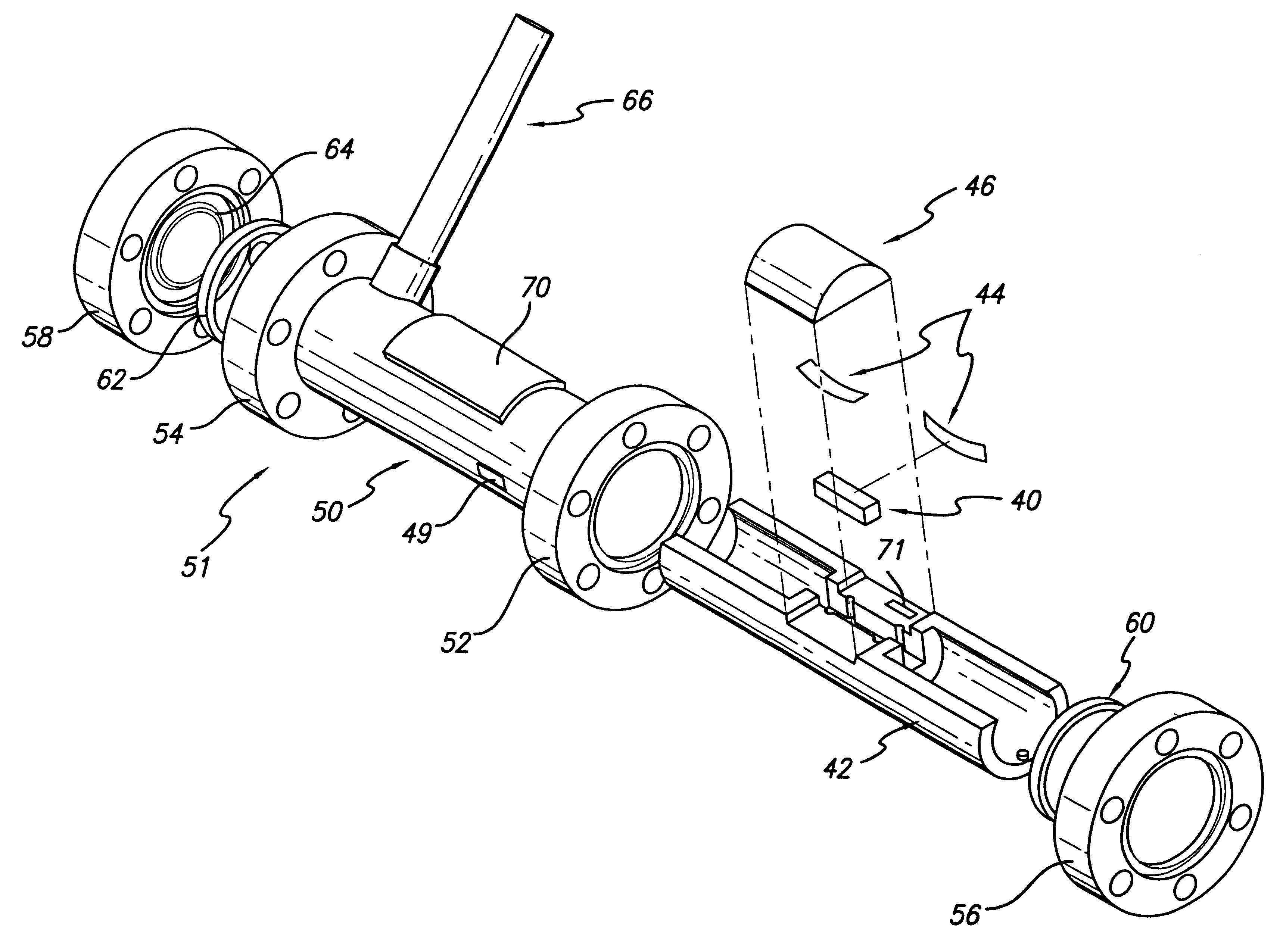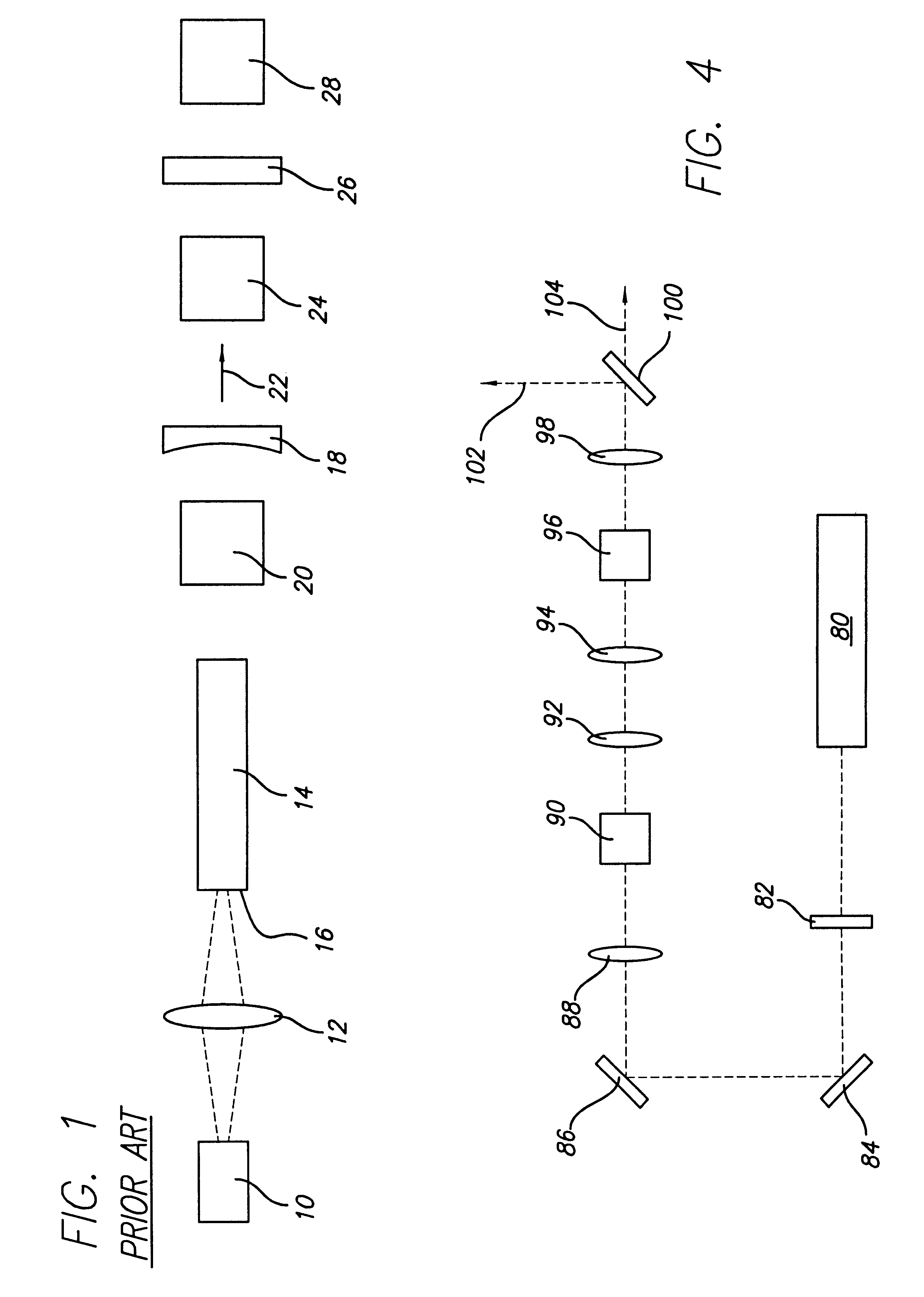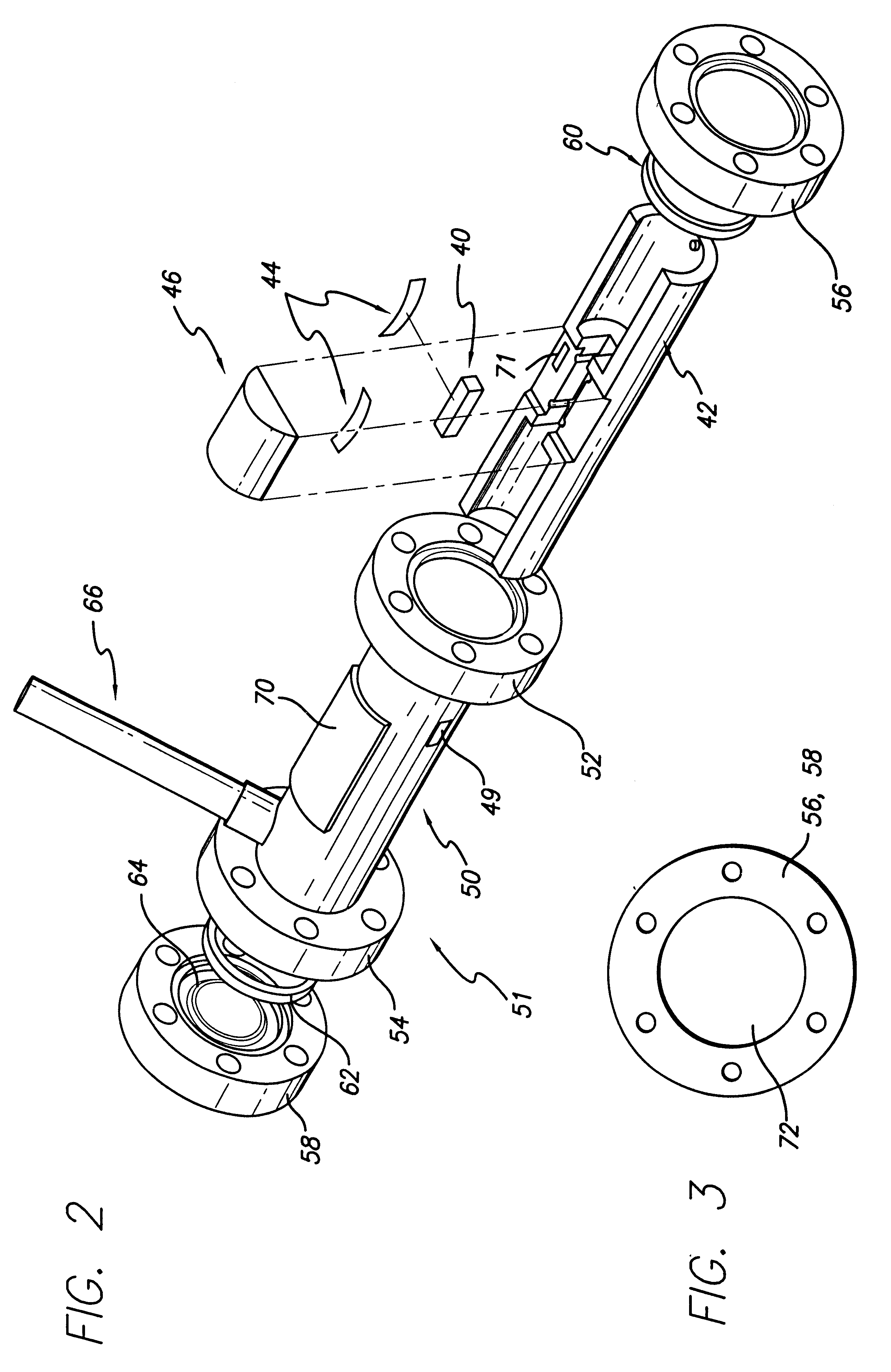Extended lifetime frequency conversion crystals
a technology of frequency conversion crystals and crystals, applied in the field of extended lifetime frequency conversion crystals, can solve the problems of insufficient light sources, comparatively few light sources capable of outputting significant levels of optical output, mercury lamps are a traditional short wavelength light source that has become increasingly inadequate for demanding or high intensity applications
- Summary
- Abstract
- Description
- Claims
- Application Information
AI Technical Summary
Problems solved by technology
Method used
Image
Examples
Embodiment Construction
An aspect of the present invention provides a laser system including a solid state laser producing a fundamental laser output at a fundamental wavelength. A frequency conversion crystal is disposed along an optical path leading from the solid state laser. The frequency conversion crystal receives light and outputs light at a second wavelength different from the fundamental wavelength. A chamber encloses at least a portion of an exit face of the frequency conversion crystal within an environment hermetically sealed from an environment outside of the chamber. In a particularly preferred aspect of certain embodiments of the present invention, only elements that can be well-cleaned are positioned within the hermetically-sealed chamber.
Another aspect of the present invention provides a method for producing a laser system including providing a mounting fixture and a chamber adapted for holding the mounting fixture. The method proceeds by cleaning the mounting fixture and the chamber and c...
PUM
| Property | Measurement | Unit |
|---|---|---|
| operating temperature | aaaaa | aaaaa |
| wavelength | aaaaa | aaaaa |
| wavelength | aaaaa | aaaaa |
Abstract
Description
Claims
Application Information
 Login to View More
Login to View More - R&D
- Intellectual Property
- Life Sciences
- Materials
- Tech Scout
- Unparalleled Data Quality
- Higher Quality Content
- 60% Fewer Hallucinations
Browse by: Latest US Patents, China's latest patents, Technical Efficacy Thesaurus, Application Domain, Technology Topic, Popular Technical Reports.
© 2025 PatSnap. All rights reserved.Legal|Privacy policy|Modern Slavery Act Transparency Statement|Sitemap|About US| Contact US: help@patsnap.com



